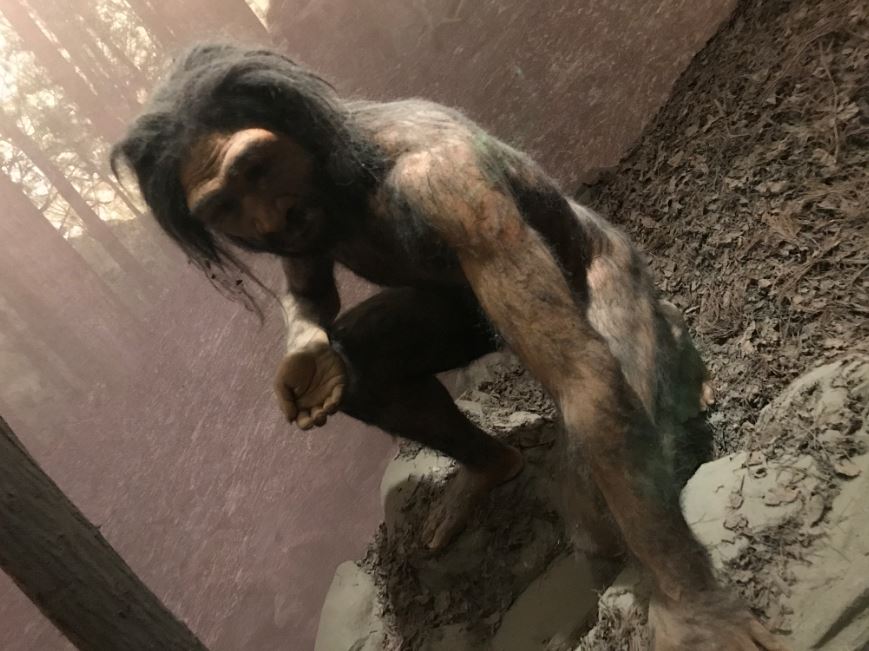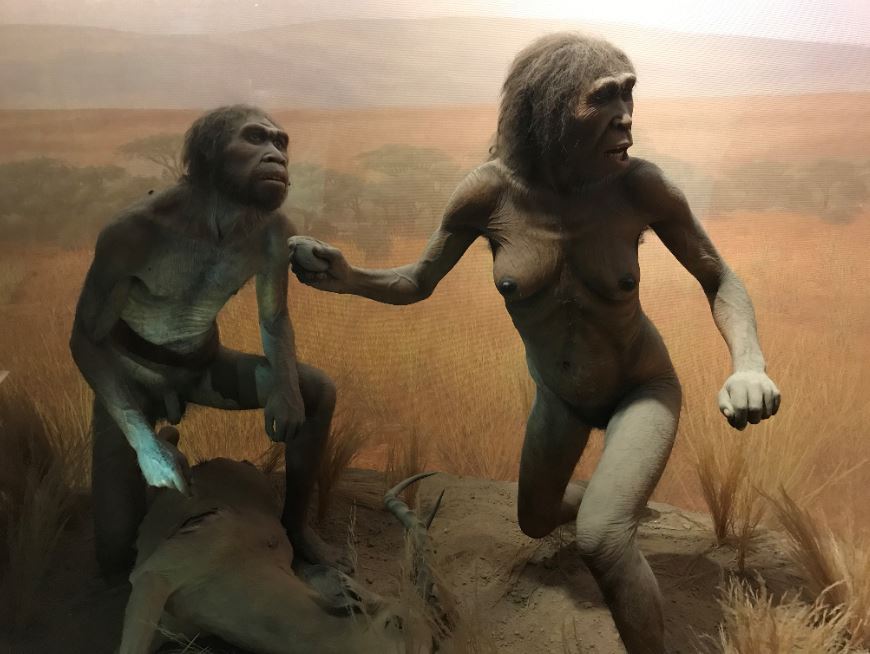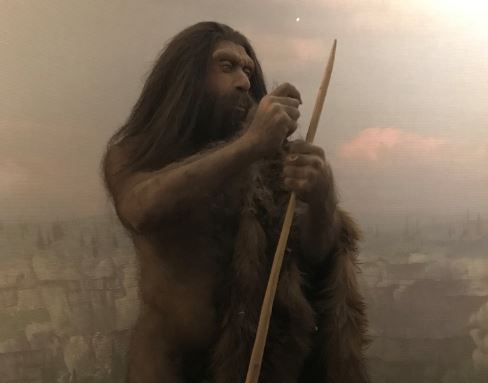
Technically, sound has been present since the very beginning of the universe. Compression waves may have rippled through hydrogen nebulas thirteen billion years ago. Hearing, however, is (cosmologically speaking) a rather new phenomenon. Although life seems to have appeared on the Earth about four billion years ago, it was not until the beginning of the Mesozoic Era about 237 million years ago that anything developed a tympanic membrane, or eardrum, the necessary organ for turning sound waves into actual hearing.
Of course, there is more to music than just hearing, and it would be millions more years before one special genus of mammal, and one noteworthy species in particular, would begin to fill the air with music.

The Greek word ἐργαστήρ means "worker," and has been applied to this species because there is evidence that its members were able to make basic stone tools (by chipping away at one stone with another stone to sharpen it) and possibly to use fire in a controlled way. These behaviors, while far more advanced than any animal at the time, remain directed to fully natural ends. This species arose approximately 2,000,000 years ago. Some scientists think there is no difference between it and homo erectus.

From about 1.83 million to 143,000 years ago, homo erectus ("upright man") lived throughout Asia and Africa. This may have been the first hominid species to leave Africa. It was theorized for some time that modern humans evolved from homo erectus, but genetic evidence suggests this is probably not the case. There is some evidence that homo erectus used simple tools for hunting and possibly even fire.

Neanderthals lived throughout Europe from about 430,000 years ago until as recently as 40,000 years ago. This means they overlapped for quite some time with modern humans. Their brains were physically as large as ours, and there is substantial evidence that they made tools. Whether or not they could think symbolically is a matter of debate.

Evidence now suggests that anatomically modern humans originated in Africa around 150,000 years ago. What makes us uniquely human, however, is not simply our anatomy, but our capacity for symbolic thought, abstract reasoning, and creative expression. The very name of our species, sapiens, defines what sets us apart from other members of our genus. The Greek philosopher Aristotle proposed "rational animal" as the definition of man, because this is truly what sets us apart.